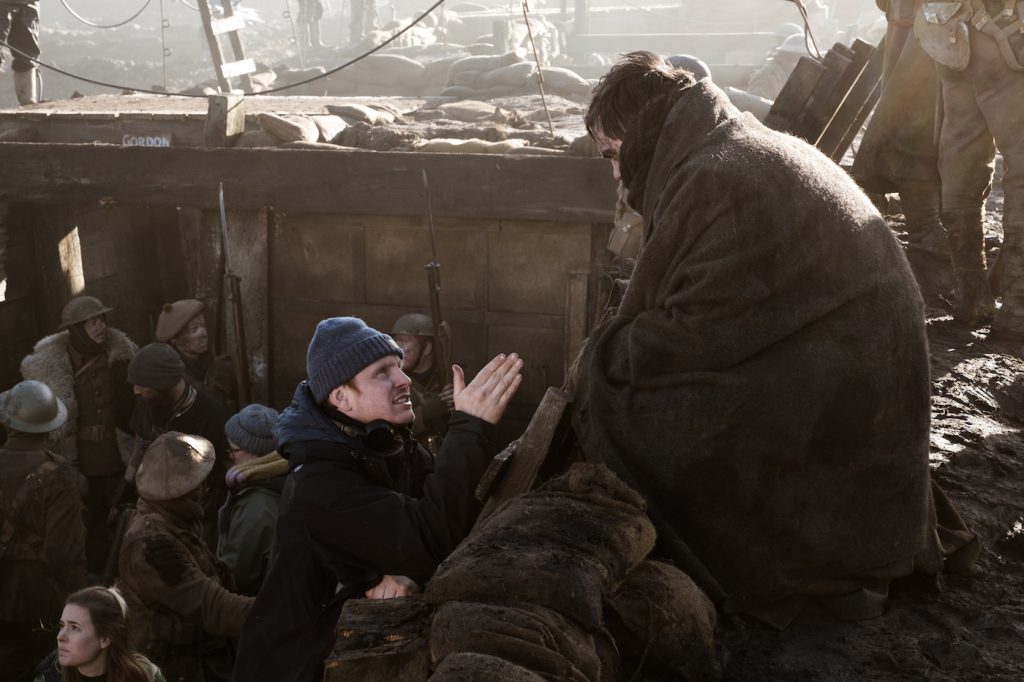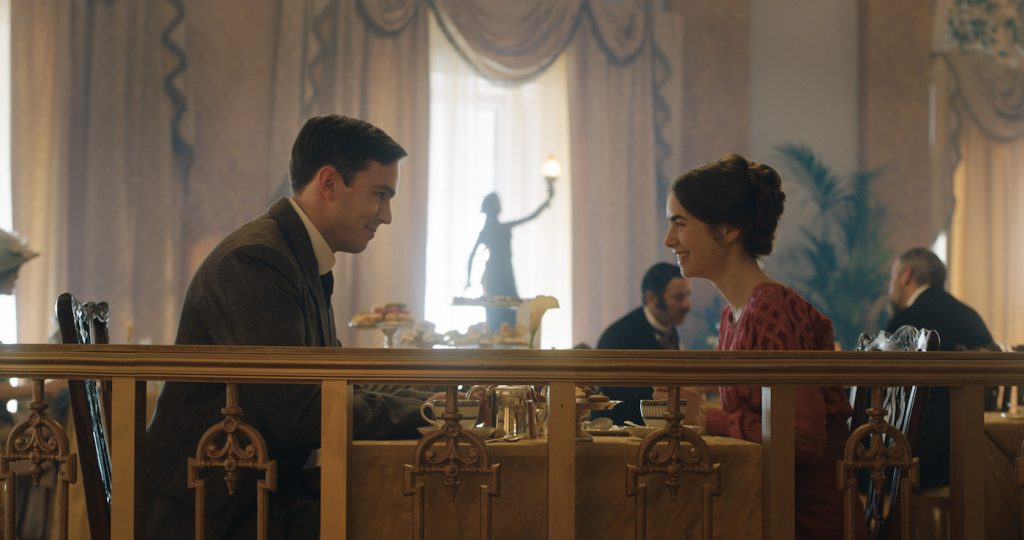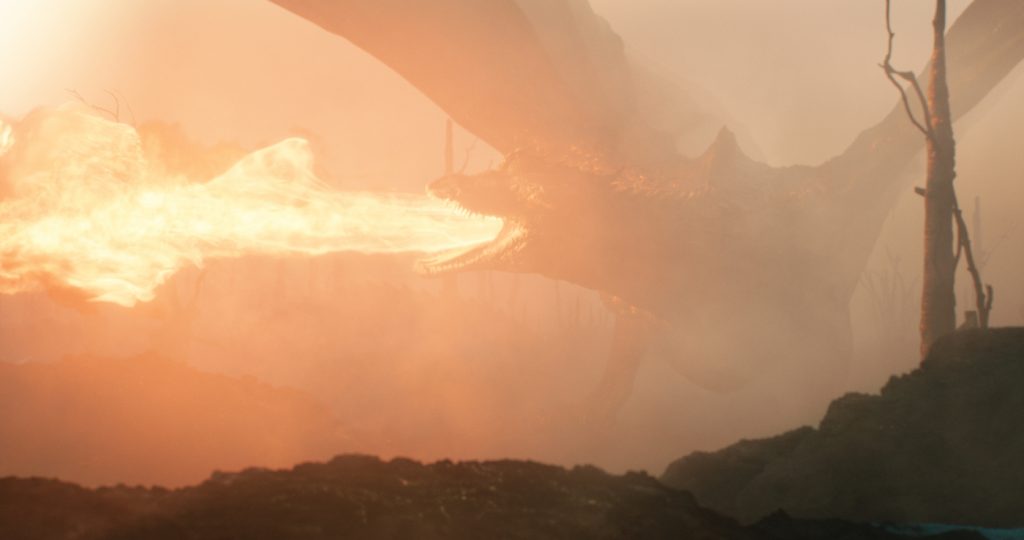Tolkien Director on Tracing Iconic Author’s Life From War to Middle Earth
The Finnish director Dome Karukoski’s biopic Tolkien traces the future of the “Lord of the Rings” author’s path from his peripatetic tween years through his Oxford attendance, intercut with his nightmarish experience fighting in the Battle of the Somme during World War I. Throughout, Karukoski offers a poetic depiction of the author’s fomenting imagination, seen through Tolkien’s eyes in the shadows of a child’s spinning light globe or marauding in the battlefield as Tolkien, gripped with trench fever, looks for a lost friend. Shadowy long-haired figures grip swords or convolute into dragons before Tolkien (played as a youth by Harry Gilby and for the rest of the film by Nicholas Hoult) is pulled back to reality. “Most of those fantasy images were something I brought into the film during production and during edits,” Karukoski explained. “At the core, these were his formative years before he writes his books. I had to go back to 12, 13, or 15 year old me, reading these books, and how my imagination — this was a time before internet — and how my mind saw that world. I had to go back to that kid and think about how this young Tolkien must have built his imagination.”
Karukoski illustrates this building process against the backdrop of Tolkien’s teenaged years. His mother dies, and he and his brother (Guillermo Bedward) are entrusted to the care of a priest (Colm Meany), who places them at a Birmingham boarding house and ensures their entry to the industrial city’s prestigious King Edward’s School. Mrs. Faulkner’s townhouse and St. Edward’s are pivotal locations for young Tolkien, who goes by one of his middle names, Ronald — at home, he comes to know Edith Bratt (Lily Collins), a fellow orphan and his future wife, and at the latter he finds friends as art and literature obsessed as he is. None of these relationships come easily, however, with his early school days marked by bullying and loneliness. “I was 12 or 13 when I first read ‘The Lord of the Rings.’ It came at the same time in my life as we’re depicting in this film, in Tolkien’s life,” said Karukoski. “If I look at myself then, I was an outsider, I had moved a lot, I was being bullied, so I was very alone. I was alone without a father, and I didn’t have that many friends.” Combined with the birth of a desire to work in film that coincided with his early exposure to Tolkien’s fantasy novels, the parallels Karukoski discovered between his own life and the author’s became a driving motivation to examine Tolkien’s life long before Middle Earth was born.

Before learning of their similarities, he joked, “I probably didn’t really understand who the person was behind the books. I always imagined him as this old man in Oxford smoking a pipe, debating about elves and Christianity with C.S. Lewis.” To convey the writer’s youthful formative years, Karukoski’s imaginative young Ronald whiles away his time at key locations around industrial Birmingham before he makes his way to Oxford. The seeds of Middle Earth are planted in Tolkien, but Tolkien is set decidedly in Victorian England, with the production set in Liverpool, Manchester, and Oxford (the historic university plays itself). “The Birmingham of his era doesn’t really exist anymore. It was bombed and altered. You can’t even start trying to recreate one-to-one,” Karukoski explained. Whether in a boarding house or Ronald’s favorite tea room, these settings represent the cozy, elegiac dampness one associates with early 20th century England houses, but the production took on this aesthetic without being overly literal to biography. “Our approach was, what if he’s this man, in the hospital, post-war, having trench fever, and he dreamt all this?” the director mused. “So all those locations, as my production designer Grant Montgomery calls it, they’re a love letter from Tolkien. How would he dream those memories? The film is so much about memory and loss. What would be the image of that?”
At Barrow’s Store, where young Ronald and his school chums take tea and lament the various impediments to their creative futures, and in Mrs. Faulkner’s boarding home, the image is muted and stately — fittingly, the light gets in where Tolkien finds solace in education, at St. Edward’s and then Oxford, where the orphaned Tolkien’s fortunes turn (first for the worse, as he takes the fall for a drunken escapade on a public bus, and then surpassing all expectation, when he moves into the school’s linguistics department). Barrow’s and Mrs. Faulkner’s were both filmed on location in Liverpool, though “almost every wall has somehow been changed,” Karukoski noted, in line with the idea that these locations are part of a love letter from the writer’s memory. After finding a house with the right sort of staircase to represent the multi-floored Mrs. Faulkner’s, the production went to work altering the interiors. “After becoming an orphan, it was a darker era in [Tolkien’s] life. Edith was very much the light of his life. So the wallpaper is dark, the corners are dark, the mirror is located so that you feel like you’re being watched all the time,” the director explained. Oxford, the writer’s escape, represented “the end of a dark era for him,” and is shot in notably lighter tones than the darkly-accented abodes of Ronald’s youth. “He arrives at this place which became so important, so Oxford is a bit more golden that perhaps it is in real life,” Karukoski noted.

Tolkien is eventually plunged into the trenches at the Battle of the Somme, winding up in a pool of mud and blood, surrounded by death. “If you have to go to war at a young age, that’s something that really corrupts your mind and affects you as an artist. So with Tolkien, in this story of creation and art, that’s really pivotal to show.” Karukoski shot these realistically gruesome scenes in a field in Manchester, then juxtaposed the monstrosity of war with the darkest flights of Tolkien’s imagination, as shades of the future Nazgûl begin to rear their heads on the battlefield. As with Barrow’s and Mrs. Faulkner’s, however, “the colors and the elements in the war locations were built not to be a one-to-one reality, but through the lens of Tolkien’s eyes,” he said. However, it’s in the sense of reality they do impart that these scenes become so persuasive, as the imagined birthplaces of ring-wraiths, elves, and hobbits.

Featured image: Photo Courtesy of Fox Searchlight Pictures. © 2019 Twentieth Century Fox Film Corporation All Rights Reserved



